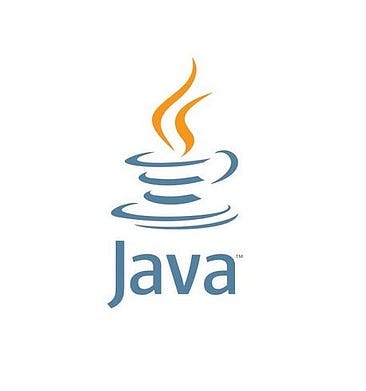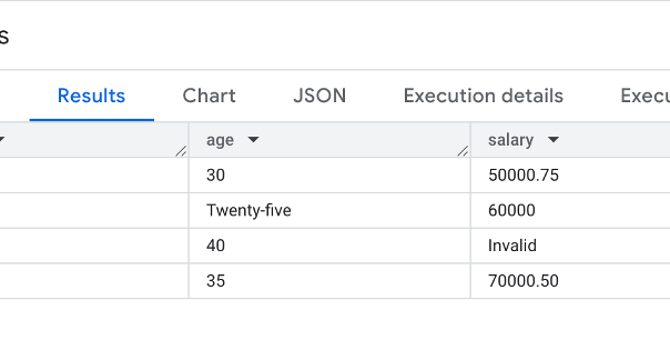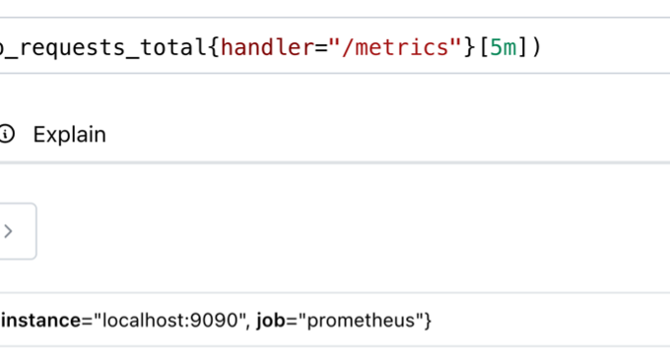Programming News
Medium
332

Image Credit: Medium
Why Writing Python Feels Like Writing Poetry
- Writing Python feels like writing poetry due to its focus on readability, clarity, and simplicity.
- Python is designed to prioritize clarity and simplicity, a philosophy established by Guido van Rossum.
- The Python community upholds the value of readability and simplicity, evident in the Zen of Python guiding aphorisms.
- Python's language design emphasizes clarity, where form emerges from meaning and every word has significance.
Read Full Article
19 Likes
PlanetPython
242

Image Credit: PlanetPython
Django Weblog: Django security releases issued: 5.2.2, 5.1.10, and 4.2.22
- Django team has issued security releases for Django 5.2.2, 5.1.10, and 4.2.22.
- Security issue CVE-2025-48432 addressed potential log injection via unescaped request path.
- Severity of the issue is 'moderate' as per Django's security policy.
- Users are advised to upgrade Django versions to address the security vulnerabilities.
Read Full Article
14 Likes
Dev
960

Image Credit: Dev
Reportgen.io vs Html2pdf.app - Which PDF API Should You Use in 2025? ⚔️
- Reportgen.io is designed for dynamic PDF generation with multiple templating engines, pay-per-use pricing, and a developer-centric dashboard.
- Html2pdf.app is a lightweight, credit-based service for straightforward raw-HTML-to-PDF jobs.
- Reportgen.io supports templating engines like EJS, Handlebars, GoTempl, or raw HTML, while Html2pdf.app only supports raw HTML.
- Reportgen.io is more suitable for highly-customized, data-driven documents, while Html2pdf.app is better for turning single pages into PDFs on a tight budget.
Read Full Article
12 Likes
Medium
5.5k

Image Credit: Medium
Understanding Vapor Framework for iOS Developers: A Simple Breakdown of Project Structure
- Setting up Vapor framework involves checking Swift version, installing Homebrew and Vapor Toolbox.
- Vapor projects use controllers to handle specific requests and perform actions like data manipulation.
- Migrations in Vapor are like architectural blueprints defining database structure, allowing changes like adding new fields.
- Models in Vapor represent real-world items, corresponding to database tables and holding specific information.
Read Full Article
12 Likes
Discover more
- Software News
- Web Design
- Devops News
- Open Source News
- Databases
- Cloud News
- Product Management News
- Operating Systems News
- Agile Methodology News
- Computer Engineering
- Startup News
- Cryptocurrency News
- Technology News
- Blockchain News
- Data Science News
- AR News
- Apple News
- Cyber Security News
- Leadership News
- Gaming News
- Automobiles News
Javacodegeeks
408

Image Credit: Javacodegeeks
[FREE EBOOKS] Solutions Architect’s Handbook, The Embedded Linux Security Handbook & Four More Best Selling Titles
- The Solutions Architect’s Handbook offers insights and advanced techniques for solutions architects, focusing on architecture design principles, generative AI, and cutting-edge advancements.
- The Embedded Linux Security Handbook provides guidance on securing embedded Linux systems from design to deployment, addressing hardware and software vulnerabilities.
- AI and Innovation explores transforming business with generative AI, featuring frameworks tested at global companies like Siemens, GE, and Microsoft.
- Still Standing highlights business resilience strategies in a disruptive world, offering guidance on navigating pressures, tough conversations, and fostering workplace culture.
- Flex offers strategies for building a successful career around life's demands, providing insights on career clarity, job transitions, effective communication, and flexible working requests.
- The Cybersecurity Control Playbook is a resource for implementing cybersecurity controls to protect businesses in a networked landscape, covering foundational and advanced topics with examples.
- These free eBooks cater to various topics such as solution architecture, embedded Linux security, AI innovation, business resilience, career development, and cybersecurity controls.
- From embracing cutting-edge technologies to fostering workplace resilience, the eBooks aim to empower readers to excel in their careers and navigate challenges in the digital age.
- Each eBook provides practical insights, tools, and frameworks for professionals to enhance their skills, transform organizations, and stay ahead in rapidly evolving industries.
Read Full Article
24 Likes
Hackernoon
296

Image Credit: Hackernoon
Don’t Be Intimidated by Open Source—Here’s How to Start Helping
- The shortage of open source contributors is a reality, with only 17% of developers consistently active in contributing.
- Contributions beyond code, such as writing docs, triaging issues, and providing feedback, play a crucial role in supporting open source projects.
- Common blockers for developers contributing to open source include fear of judgment, low confidence, lack of guidance, language barriers, and time constraints.
- The lack of new contributors in open source can lead to project stagnation, maintainer burnout, and the loss of support for critical technologies.
- Encouraging more developers to contribute can unlock lost potential for innovation and ensure the sustainability of open source projects.
- Creating welcoming environments, improving documentation, offering beginner-friendly tasks, and providing constructive feedback are key to attracting and retaining contributors.
- Projects like Vue.js, p5.js, and OpenRefine exemplify good practices in engaging contributors and supporting a diverse community.
- Contributing to open source is not just about code but also about helping and mentoring others, fostering growth and collaboration within the community.
- Starting small and working together can make a significant impact in the open source world, allowing more individuals to participate and grow as developers.
- Engaging in open source doesn't require being a genius; it's about making a start and contributing in any way possible to support the growth of developers, communities, and ideas.
Read Full Article
17 Likes
Hackernoon
412

Image Credit: Hackernoon
Programming Books May Be the Better Way to Learning to Code
- Reading programming books helps to cultivate the mindset of a programmer with depth and understanding.
- Books allow for a deeper exploration of programming concepts compared to online tutorials.
- Developing a habit of reading technical material is critical for a successful programming career.
- Recommended books like 'Python Crash Course' and 'Eloquent JavaScript' provide practical knowledge and projects.
- 'The Pragmatic Programmer' offers timeless principles applicable for effective software development.
- 'Clean Code' emphasizes writing maintainable software for better readability and understanding.
- 'Designing Data-Intensive Applications' focuses on architecting systems for scalability and reliability.
- Books like these play a crucial role in improving coding skills and understanding system design.
- Building a solid foundation with programming books is essential for aspiring and experienced developers alike.
- In a world of quick results, investing time in reading programming books can lead to long-term success.
Read Full Article
24 Likes
Medium
363

Image Credit: Medium
Converting a List to a Map in Java: Multiple Approaches
- The most modern and concise way to convert a List to a Map in Java is with the Stream API and Collectors.toMap().
- Handle key collisions with a merge function if the key extractor may produce duplicates to avoid IllegalStateException.
- For those not comfortable with stream syntax or using Java 7 or earlier, a simple loop can also be used for conversion.
- Choose the appropriate approach based on your use case and coding style, whether it be using the Stream API or traditional methods.
Read Full Article
21 Likes
Medium
170

Image Credit: Medium
Enso: Revolutionizing Crypto Interactions with Shortcuts
- Enso is a project introducing Shortcuts to simplify complex on-chain actions in the crypto space.
- Enso is a smart execution layer enabling users to perform multi-step transactions seamlessly, consolidating actions into one-click Shortcuts.
- Shortcuts are pre-configured transaction sequences that bundle multiple on-chain actions into a single click, reducing the complexity of interactions for users.
- Enso's mission is to enhance crypto usability for both beginners and advanced users by reducing the steps needed to navigate the decentralized web.
Read Full Article
10 Likes
Medium
170

Image Credit: Medium
Scientists fleeing America for the first time in 80 years: Trump cuts research funding; 75% looking…
- 75% of scientists are leaving America due to funding cuts and restrictive policies under President Trump, seeking opportunities in Europe and Asia.
- The Trump administration has significantly reduced research funding, such as cutting grants from institutions like the National Institutes of Health, leading to concerns of project closures.
- Countries worldwide are now competing to attract scientists by offering various incentives, like the European Union investing billions of euros to make Europe more appealing for researchers.
- America's leadership in research and development is being challenged as immigrants have contributed significantly, winning over 400 Nobel Prizes, with one-third being immigrants.
Read Full Article
10 Likes
Medium
166

Image Credit: Medium
Your Excuses Are Lying to You
- Excuses like 'I'll start tomorrow' or 'I'm not ready yet' are just holding you back from progress.
- Excuses may seem smart and safe, but they prevent growth and keep you stuck in the same place.
- Your brain prefers comfort and resists change, leading to procrastination and delays in taking action.
- Real change only occurs when you push past excuses and step out of your comfort zone.
Read Full Article
9 Likes
Dev
26

Image Credit: Dev
Exploring the Intersection of Functional and Object-Oriented Programming in JS
- JavaScript has evolved to support both Functional Programming (FP) and Object-Oriented Programming (OOP), showcasing an intersecting paradigm in the language.
- The historical context of JavaScript reveals its object-based origins while incorporating Java's influence initially.
- Functional Programming features like first-class functions and closures merged with Object-Oriented enhancements in JavaScript's development.
- JavaScript's unique capabilities allow for seamless integration of OOP and FP, enabling developers to leverage both paradigms effectively.
- Creating objects in JavaScript can be done using Constructor Functions or Factory Functions, showcasing the flexibility in approach.
- Higher-Order Functions play a vital role in manipulating data structures like user objects with utility functions.
- Immutability in JavaScript can be achieved through functional techniques like object spread and maintaining original object integrity.
- Combining OOP and FP in complex scenarios like a book management system showcases the versatility of utilizing both paradigms.
- Performance considerations in combining OOP and FP include managing memory usage, garbage collection, and leveraging profiling tools for optimization.
- Real-world use cases like React and Node.js demonstrate the amalgamation of OOP and FP principles in industry-standard practices.
Read Full Article
1 Like
Self-Learning-Java
332

Image Credit: Self-Learning-Java
SAFE_CAST in BigQuery to perform Error-Free Data Conversion
- Using SAFE_CAST in BigQuery helps to convert data types safely by replacing conversion errors with NULL instead of causing query failures.
- It is useful for handling invalid data formats, data cleaning, and working with external data sources with unknown formats.
- SAFE_CAST function syntax: SAFE_CAST(expression AS target_data_type).
- Comparison with CAST: SAFE_CAST returns NULL if conversion fails, whereas CAST throws an error.
Read Full Article
19 Likes
Dev
170

Image Credit: Dev
A Modern Approach of Implementing Dark Mode
- Modern browsers now support dark mode, making it a great time to implement it on the web.
- A solid dark mode implementation should respect user preferences and define color schemes using custom properties.
- Incorporating prefers-color-scheme allows adjustments beyond color changes for improved readability in dark mode.
- To toggle dark mode, utilizing custom data attributes and JavaScript for saving user preferences is essential.
- Considerations for an 'auto' mode to revert to system preferences and ensure a smooth user experience.
- Transitioning between light and dark modes can be visually enhanced using view transitions and animations.
- Web Animations API or CSS Keyframes can both be used to create smooth transition effects for dark mode toggling.
- Animating the transition based on user interactions like mouse clicks provides a polished visual experience.
- CSS keyframes can be utilized to achieve a smooth reveal effect for transitioning between light and dark modes.
- Implementing dark mode with attention to details like transitions and user experience can enhance the aesthetics of a website.
Read Full Article
10 Likes
Self-Learning-Java
363

Image Credit: Self-Learning-Java
Prometheus rate() Function: Measuring How Fast Your Metrics Are Growing
- The rate() function in Prometheus calculates the average per-second increase of a counter over a specified time range.
- It is used to determine how fast a value, such as a counter, is increasing every second, averaged over the designated time window.
- rate() works exclusively on counters, providing an instant vector with one data point per series for the current evaluation time. It is beneficial for alerting and visualizations, especially for slow-moving metrics.
- When using rate(), always apply it before aggregators like sum() or avg(), limit its use to counters and histograms, and consider using it for alerting thresholds.
Read Full Article
21 Likes
For uninterrupted reading, download the app